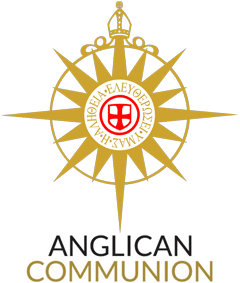Communications
Announcements

Clergy ministry transitions in 2025
Arrivals, departures and retirements.Death in our diocesan family: The Very Rev. Sandye Wilson
With sadness we share the news of the death of the Very Rev. Sandye Wilson, 71, on April 15, 2025.Death in our diocesan family: Diane Mayo
With sadness we share the news of the death of Diane Mayo, 89, on March 25, 2025. She was the widow of the late Rev. Robert Mayo, who had served as Rector of Christ Church, East Orange, and interim rector at St. Luke’s, Montclair and St. Paul’s, Paterson.Recommendations from the Women’s Rights Action Group
It is hoped that these actions will engage the people of God in the work of God on behalf of women and girls.Immigration Task Force launches podcast
The diocesan Immigration Task Force is excited to introduce a new podcast designed to share the stories of asylum-seekers who have made their way to The Lighthouse.Death in our diocesan family: Rosemary Lafferty Wilcox
With sadness we share the news of the death of Rosemary Lafferty Wilcox, 86, on February 8, 2025. She was the mother of the Rev. Diana Wilcox.Death in or diocesan family: The Rev. David C. Casto
With sadness we share the news of the death of the Rev. David C. Casto, 93, on Feb. 2, 2025.Death in our diocesan family: The Rev. William Chandler Riker, Jr.
With sadness we share the news of the death of the Rev. William Chandler “Bill” Riker, Jr., 84, peacefully on February 2, 2025.Death in our diocesan family: The Rev. Deacon Robert “Bob” Turner
With sadness we share the news of the death of the Rev. Deacon Robert “Bob” Turner, 86, on November 16, 2024.Death in our diocesan family: The Rev. Dr. Howard W. “Doc” Whitaker
With sadness we share the news of the death of the Rev. Dr. Howard W. “Doc” Whitaker, 71, on January 26, 2025 of leukemia.Death in our diocesan family: Ruth A. Gadbois
With sadness we share the news of the death of Ruth A. (Murphy) Gadbois, 84, on January 17, 2025. She was the mother of the Rev. Paula Toland of St. Stephen’s, Millburn.Death in our diocesan family: Lisa Smith
With sadness we share the news of the death of Lisa Smith, 65, on December 29, 2024 while visiting her sister in Austin, TX.Relocation of diocesan offices: Status update January 2025
In preparation for NJPAC taking possession of 31 Mulberry at the end of this month, on January 21 Bishop Hughes led a Service of Deconsecration and Farewell in its chapel.Convention Corner: A heartfelt thank you for the success of the 150th Convention
After months of hard work and preparation, the Convention was over in the blink of an eye. However, such a large event does not happen without the dedication and contributions of countless individuals.Suggestions from the Bishop’s Action Groups
The Action Groups for Climate, Immigration, Migrants, Asylum Seekers, Racial Justice & Racial History, and LGBTQ Support and Advocacy share suggestions for actions that individuals or parishes can take right now.Changes to the Bishop’s staff
After more than fifteen years of dedicated service to the diocese, Noel Garcia will be retiring as Controller on Wednesday, January 15. The diocese has engaged a consultant, Alice Ralston, to serve as Interim Controller.Director of Communications




